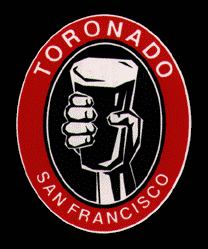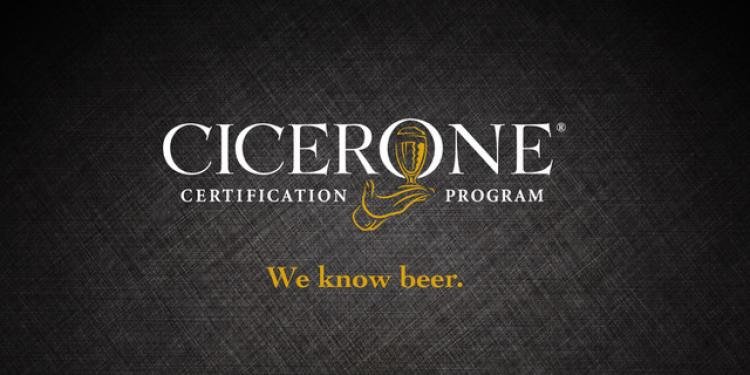Craft Beer History Timeline
This timeline is by no means comprehensive, nor is it meant to be. It is a continual work in progress
1965
Fritz Maytag rescued the failing Anchor Brewing Company in San Francisco. Its flagship, Anchor Steam Beer, was widely recognized as the first American “craft” beer. It was later joined by Anchor Porter, Anchor IPA, Old Foghorn Barleywine and the annual holiday release, Our Special Ale.
1972
The Cascade hop was first introduced to the brewing industry as an aroma hop. Anchor Brewing in San Francisco was the first brewery to use the hop commercially in 1975. It went on to become the most widely used hop in American craft brewing.
1976
Along with co-owners Jane Zimmerman and Suzy Stern, retired navy man Jack McAuliffe built his own small brewing system and opened New Albion Brewing, the first microbrewery in the United States. The venture only lasted seven years.
1977
British writer Michael Jackson published “The World Guide to Beer”, a seminal work that introduced readers to the concept of beer “styles”.
1978
President Carter signed HR-1337, a bill that made homebrewing legal in the U.S. The law went into effect on February 1st, 1979, spawning a generation of people making their own beer at home -many of whom went on to open their own microbreweries.
1979
Charles Finkel founded Merchant du Vin which introduced Americans to Belgian Trappist beers, Orval, Westmalle, and Rochefort, Lindeman’s lambics, Samuel Smith Ales and Ayinger among others. In 1989, he and his wife Rose Ann, founded Pike Place Brewing in Seattle.
1978
Nuclear engineer Charlie Papazian founded the American Homebrewers Association. In 1979 he founded the Association of Brewers (now called the Brewers Association), of which the AHA is now a part. Author of “The Complete Joy of Homebrewing”, he is considered the Godfather of homebrewed beer.
1979
Fireman Tom De Bakker and his wife, Jan, opened the second craft brewery in the U.S. (De Bakker Brewing) in Novato, California.
1979
Two University of Colorado professors, Stick Ware and David Hummer (along with partner Alvin Nelson), started the Boulder Brewing Company, Colorado’s first craft brewery. The original brewery site was on a small farm, the brewhouse residing in a shed originally built to house goats.
1979
All About Beer magazine, a print publication for beer consumers, was founded by Mike and Bunny Bosak. After changing ownership a number of times, AAB has found new life in digital form; articles and podcasts can be found online and in social media.
1980
In Chico, California, brewing entrepreneurs Ken Grossman and Paul Camusi brew the first batch of Sierra Nevada beer. Sierra Nevada Pale Ale became the exemplar for the American Pale Ale style.
1981
Bill Newman opens the William S. Newman Brewing Company in Albany, New York, arguably the first microbrewery east of the Rocky Mountains.
Using secondhand and makeshift equipment, Paul Shipman and Gordon Bowker opened Redhook Brewing Company in a renovated transmission shop in the Ballard neighborhood of Seattle, Washington. Redhook was later acquired by the Anheuser-Busch Brewing Co. and was more recently purchased by Tilray Brands, Inc.
1981
1982
The first Great American Beer Festival (GABF) is held in conjunction with the American Homebrewers Association’s annual conference in Boulder, Colorado. It featured 24 participating breweries and 47 different beers.
1982
Bert Grant opens Yakima Brewing & Malting in Yakima, Washington, the first brewpub in the United States since Prohibition.
1983
Bill Owens opens Buffalo Bill's Brewery as California’s first brewpub, in Hayward. Owens is credited with producing the first Pumpkin beer in the U.S.
1983
Larry Bell opens a homebrew supply store in Kalamazoo, Michigan. Two Years later he launched the Kalamazoo Brewing Company (later known as Bell’s Brewery).
1984
Samuel Adams Boston Lager is introduced in Boston. Though not a bricks-and-mortar brewery at the time, Sam Adams became very influential in the craft beer industry.
1987
David Keene opens the Toronado Pub in San Francisco, a pioneering “beer bar” in the U.S.
1987
Ed and Carol Stoudt open Stoudt’s Brewery in Adamstown, Pennsylvania. Carol became the first woman owner/brewer at a craft brewery in the U.S.
1987
Brothers Jim and Russ Klisch open Lakefront Brewery in Milwaukee, a “Frankenstein operation” consisting almost entirely of equipment that had lived and died in a previous life. They sold their first barrel of beer to a tavern within rolling distance of the brewery.
1988
This year saw the debut of the greatest class of craft breweries, including Rogue (Ashland, Oregon), Vermont Pub & Brewery (Burlington, Vermont), Great Lakes (Cleveland, Ohio), Brooklyn (Brooklyn, New York), Goose Island (Chicago, Illinois), Deschutes (Bend, Oregon) and Wynkoop (Denver, Colorado).
1988
The Dean of American beer writers, Fred Eckhardt, self-publishes “The Essentials of Beer Style” guide.
1989
British beer writer Michael Jackson launches The Beer Hunter video series, which appears on cable TV and exposes thousands of Americans to a several new craft breweries and a variety of beer styles.
1989
Charlie Otto of the draught-only Otto Brothers Brewery in Wyoming, is credited with the introduction of the ubiquitous half-gallon glass jug “Growler” for beer-to-go.
1991
Kim Jordan and Jeff Lebesch establish New Belgium Brewing in Ft. Collins, Colorado. Fat Tire Amber Ale becomes a staple in the craft beer market.
1992
Belgian transplant Pierre Celis helped popularize Witbier in the United States with his Celis White Beer. Witbier (or White Beer) became one of the most popular new beer styles in America.
1993
Though the actual year is debatable, Goose Island Brewery in Chicago is the first to produce a commercially-made Bourbon barrel aged beer. Its long-term influence on the industry is indisputable.
1994
What had previously been illegal, the inclusion of alcohol content in beer advertising and on beer packaging is finally made legal.
1995
Brewer Keith Villa formulates the original recipe for Blue Moon White Beer (then known as “Belly Slide Wit”) for The Sandlot Brewery inside Coors Field in Denver, Colorado.
1998
The first Boonville Brewfest is held in Boonville, California, organized by the original owners of the Anderson Valley Brewery.
2002
Oskar Blues Brewery in Longmont, Colorado, is the first craft brewery to can their flagship beer, Dale’s Pale Ale. Many craft breweries followed their lead.
2003
About a decade after the first commercial barrel aged beer is produced, the Festival of Wood and Barrel Aged Beer (also known as FOBAB) debuts in Chicago.
2006
American Craft Beer Week is officially recognized by the U.S. Congress, highlighting its significance in the nation’s culture and economy. This acknowledgement is a milestone, celebrating the contributions of craft brewers to the richness and diversity of American beer.
2011
Chicago’s Goose Island Brewery is sold to Anheuser-Busch for a reported $38 million dollars. It is the first of many marquee craft brands to be bought out by A-B/InBev.
2007
Brewer Teri Fahrendorf creates the Pink Boots Society to “Assist, inspire and encourage women and non-binary individuals in the fermented/alcoholic beverage industry to advance their careers through education.” PBS now has over 74 chapters with over 2,000 members.
2007
The Cicerone Certification Program is launched, teaching thousands of people around the world about beer. It quickly becomes the global beer equivalent to the Wine Sommelier program.
2013
The first Hazy IPA, Heady Topper, is introduced by the Alchemist Brewery in Waterbury, Vermont. Within a few years, this new “style” sweeps across the U.S., inexorably changing the craft beer landscape.
2014
The Brewers Association amends its definition of “Craft Brewer” by dropping the requirement that craft beer be made from at least 50% barley. This leads to long-time American regional brewers D.G. Yuengling, August Schell, Point, and Spoetzl joining the craft brewing community.
2015
San Diego-based brewer, Ballast Point, is sold to distributor Constellation Brands for a reported $1 Billion dollars. Four years later it is sold to Kings and Convicts (a small Chicago-area brewing company) for an undisclosed amount.
2019
East Coast brewers Boston Beer Company and Dogfish Head Brewery enter into a merger to stave off rapid consolidation and acquisition of craft breweries by industry giants. The deal is valued at $300 Million in cash and stock.
2020
The global Covid-19 pandemic leads to sweeping changes in the way craft breweries conduct business. Over the following years, the financial fallout from the pandemic forces the closing of hundreds of small breweries across the country, and industry growth stagnates.
2020
The introduction of seltzers and other flavored malt beverages to the market, impinges on craft beer sales and market share. Many breweries begin producing seltzers and FMBs at various levels of success; the practice wanes almost as quickly as it began.
2022
The iconic Hales Ales in Seattle, opened in 1983, closes after 39 years.
2022
The Black Brewers Association (NB2A) is established, in part, to “Foster understanding about the history and legacy of African American brewing in the United States.”
2024
After the venerable Anchor Brewery in San Francisco announces its impending closure in 2023, Hamdi Ulukaya, the billionaire founder and CEO of yogurt maker Chobani, purchases the brand with plans to revive Anchor Brewing’s taprooms and beloved brews.
2024
2025
The American Craft Beer Hall of Fame is incorporated as a not-for-profit 501 (c)(3) charitable corporation. It’s first members were inducted later in this year.
The inaugural induction ceremony took place in February; it was livestreamed from five breweries across the U.S.: Dogfish Head, New Realm, Dovetail, Bierstadt Lagerhaus, and Deschutes. The American Craft Beer Hall of Fame welcomed its first twelve Inductees.
The American Craft Beer Hall of Fame is launched and the inaugural class of members is inducted.















































